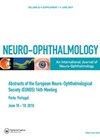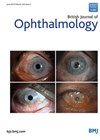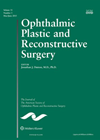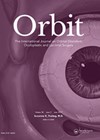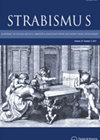Recognising clinical characteristics of blepharospasm
Focal dystonia is regarded as a characteristic feature of blepharospasm, but patients do not always present with these motor symptoms. The authors present a retrospective analysis of data from a large number of patients treated for drug-induced or essential blepharospasm...
Using graphical illustration to predict giant cell arteritis
A nomogram is a chart or graph of scaled variables that facilitates the approximate computation of a mathematical function via intersecting lines. The objective of this study was to illustrate the use of a nomogram for the prediction of giant...
Investigation of blood platelet parameters in anterior ischaemic optic neuropathy
The aim of this clinical retrospective comparative study was to assess the possible relationship between arteritic anterior ischaemic optic neuropathy (AAION) and non-arteritic anterior ischaemic optic neuropathy (NAION) with blood platelet parameters and neutrophil-to-lymphocyte ratio (NLR). The medical records of...
Paraneoplastic optic neuropathy features
This is a retrospective review of seven patients diagnosed with paraneoplastic optic neuropathy (PON) between January 2015 and June 2017. Five patients had a history of primary malignancy, including papillary thyroid carcinoma, type B thymoma, testicular seminoma and lung carcinoma....
Thyroid eye disease and obstructive sleep apnoea
This is a retrospective study looking for an association between compressive optic neuropathy in thyroid eye disease (TED-CON) and obstructive sleep apnoea (OSA). One hundred and nine patients with thyroid eye disease were asked to complete a validated questionnaire designed...
Cavernous sinus thrombosis and orbital cellulitis
This is a report of six cases of combined orbital cellulitis and infective cavernous sinus thrombosis, with a literature review. The average age was 39 years, four were male and two were intravenous drug users. All had sinusitis, usually involving...
Biopsy of nasolacrimal duct using sheath guided dacryoendoscopy
In this study the author’s biopsied six eyes of five individuals with recurrent nasolacrimal duct obstruction following a prior dacryoendoscopic probing. All procedures were performed under local anaesthetic, the obstruction or lesion was directly visualised with dacryoendoscope and biopsy was...
Surgical correction of involutional lower lid entropion
This is a retrospective comparative study. The authors analyse results of 281 eyelids with involutional entropion operated by two surgeons, 89 treated with buried resorbable imbricating sutures and 192 with non-buried non-resorbable sutures. The horizontal lid laxity was corrected by...
Use of bovine pericardium for tendon elongation
A retrospective analysis was conducted on all patients treated in one centre with tendon elongation using bovine pericardium (BP) to examine outcomes and long-term safety. The study included 60 patients; 27 unilateral and 33 bilateral cases. Follow-up of one to...
TED vertical strabismus surgery
This study reports the surgical experience with superior or inferior rectus resection to correct vertical strabismus associated with thyroid eye disease (TED). The study included eight female euthyroid patients (nine muscles) with mean age at surgery of 65±8.9 years and...
Anterior segment ischaemia (ASI) risk in 3-muscle surgery
The aim of this study was to calculate the risk of clinically evident ASI following simultaneous 3-rectus muscle surgery and safety profile of the same in a relatively large number of patients from a single tertiary care centre. This was...
Consecutive exotropia features
This study sought to detect abnormal scleral attachment with comparison of histopathological findings in consecutive exotropia. The study also considered the success rate of medial rectus resection and advancement, dose response and evaluate potential preoperative factors that might indicate presence...


